Murder at the Museum
A particular treat of recent years has been the British Library's reprinting of classic and forgotten crime novels. As the largest of the UK and Ireland's six Legal Deposit Libraries, the BL (in common with us other Legal Deposit libraries - says Bookhound with legal deposit librarian hat on) is a huge repository of forgotten materials. Some, such as classic crime fiction is long overdue for a reprint, others - Air guitar for beginners, Black Sabbath for ukulele, The bicycle sermon, or Angst, the alarming sounding journal for the British Ski-Jumping Club - are probably best forgotten.
The BL's crime classics series includes some names that were ranked among the big names of Golden Age Detective Fiction, such as Freeman Wills Crofts and Anthony Berkeley. Many though such as the previously reviewed Christopher St. John Sprigg or John Rowland have long been forgotten. I loved last year's discovery of St. John Sprigg's Death of an airman, and was hoping for more of the same from John Rowland's Murder at the Museum. It was an entertaining enough read, but failed to deliver in the same way as the slightly earlier crime novel.
Published in 1938, Murder at the Museum takes place in the iconic round reading room of the old British Library building set at the heart of the British Museum. Henpecked bachelor Henry Fairhurst is spending the day in peaceful retreat away from his sister in the BL's reading room. The day becomes less than peaceful however, when a noted scholar of Elizabethan drama, Julius Arnell, drops dead after eating a poisoned sugared almond. Inspector Shelley from the Yard, with his sidekick, Cunningham, are swiftly on the case; but as Elizabethan scholars drop dead left, right and centre, it looks as though Arnell's future son-in-law may be the criminal. His fiancee and Fairhurst remain unconvinced however; then when Violet Arnell goes missing, the police and Fairhurst must track her down before the body count rises.
It's not a particularly original tale, though the use of the BL Reading Room is a nice touch. Its influences are very obvious - Ngaio Marsh (Shelley attempts to sound like Inspector Alleyn), Anthony Berkeley, a touch of Hitchcock and The 39 Steps for the chase scene, Buchan naturally, and Agatha Christie's Tommy and Tuppence - though ironically enough an early Tommy and Tuppence referenced the works of other writers, so Rowland may have felt that Christie was "fair game".
Murder at the Museum retains like many novels of the period some very out of date attitudes not least towards race - in common with other writers of the time there is a certain level of anti-semitism, though Rowland is one of the few that I've come across who takes note disapprovingly of worsening attitudes in Europe. Foreigners generally though are seen as both suspicious and dangerous, while female characters tend to be pathetic, horrendously bossy, or a strange mixture of both.
If it isn't a great star of the Golden Age, it is nevertheless an enjoyable enough quick read. It's got a feisty heroine, a reasonably well constructed plot, a good sense of location, and if the villain is way over the top, he is fairly typical of the period. The use of the BL's iconic reading room was unusual, and would be used again to great effect in the post-war classic British horror film Night of the Demon, which I suspect may have been influenced at least in part by this novel, though it was largely based on M.R. James' horror story Casting the Runes.
One to read for aficionados of British crime fiction, just don't expect anything too special.
The BL's crime classics series includes some names that were ranked among the big names of Golden Age Detective Fiction, such as Freeman Wills Crofts and Anthony Berkeley. Many though such as the previously reviewed Christopher St. John Sprigg or John Rowland have long been forgotten. I loved last year's discovery of St. John Sprigg's Death of an airman, and was hoping for more of the same from John Rowland's Murder at the Museum. It was an entertaining enough read, but failed to deliver in the same way as the slightly earlier crime novel.
Published in 1938, Murder at the Museum takes place in the iconic round reading room of the old British Library building set at the heart of the British Museum. Henpecked bachelor Henry Fairhurst is spending the day in peaceful retreat away from his sister in the BL's reading room. The day becomes less than peaceful however, when a noted scholar of Elizabethan drama, Julius Arnell, drops dead after eating a poisoned sugared almond. Inspector Shelley from the Yard, with his sidekick, Cunningham, are swiftly on the case; but as Elizabethan scholars drop dead left, right and centre, it looks as though Arnell's future son-in-law may be the criminal. His fiancee and Fairhurst remain unconvinced however; then when Violet Arnell goes missing, the police and Fairhurst must track her down before the body count rises.
It's not a particularly original tale, though the use of the BL Reading Room is a nice touch. Its influences are very obvious - Ngaio Marsh (Shelley attempts to sound like Inspector Alleyn), Anthony Berkeley, a touch of Hitchcock and The 39 Steps for the chase scene, Buchan naturally, and Agatha Christie's Tommy and Tuppence - though ironically enough an early Tommy and Tuppence referenced the works of other writers, so Rowland may have felt that Christie was "fair game".
Murder at the Museum retains like many novels of the period some very out of date attitudes not least towards race - in common with other writers of the time there is a certain level of anti-semitism, though Rowland is one of the few that I've come across who takes note disapprovingly of worsening attitudes in Europe. Foreigners generally though are seen as both suspicious and dangerous, while female characters tend to be pathetic, horrendously bossy, or a strange mixture of both.
If it isn't a great star of the Golden Age, it is nevertheless an enjoyable enough quick read. It's got a feisty heroine, a reasonably well constructed plot, a good sense of location, and if the villain is way over the top, he is fairly typical of the period. The use of the BL's iconic reading room was unusual, and would be used again to great effect in the post-war classic British horror film Night of the Demon, which I suspect may have been influenced at least in part by this novel, though it was largely based on M.R. James' horror story Casting the Runes.
One to read for aficionados of British crime fiction, just don't expect anything too special.
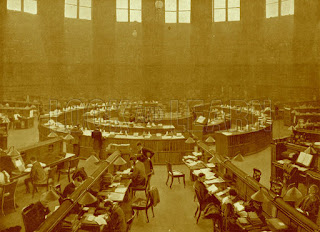

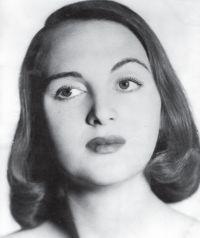
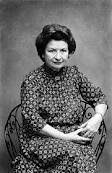

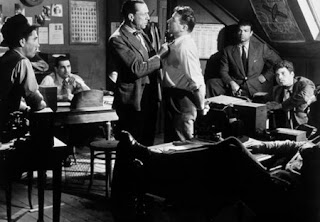

.jpeg)
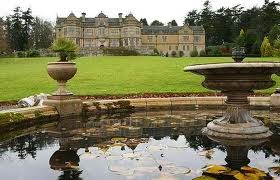

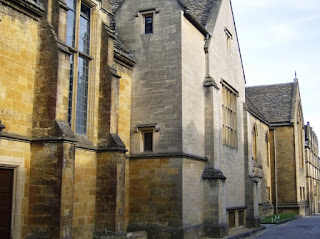
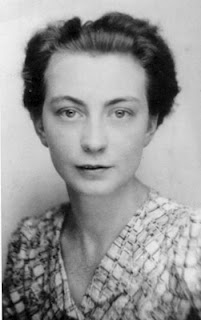
Comments